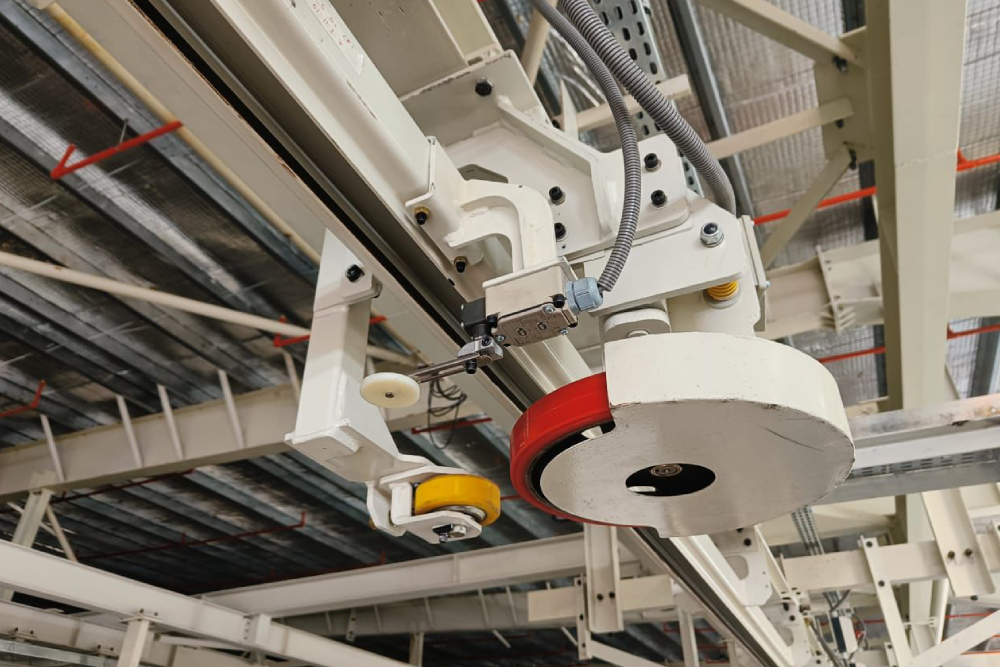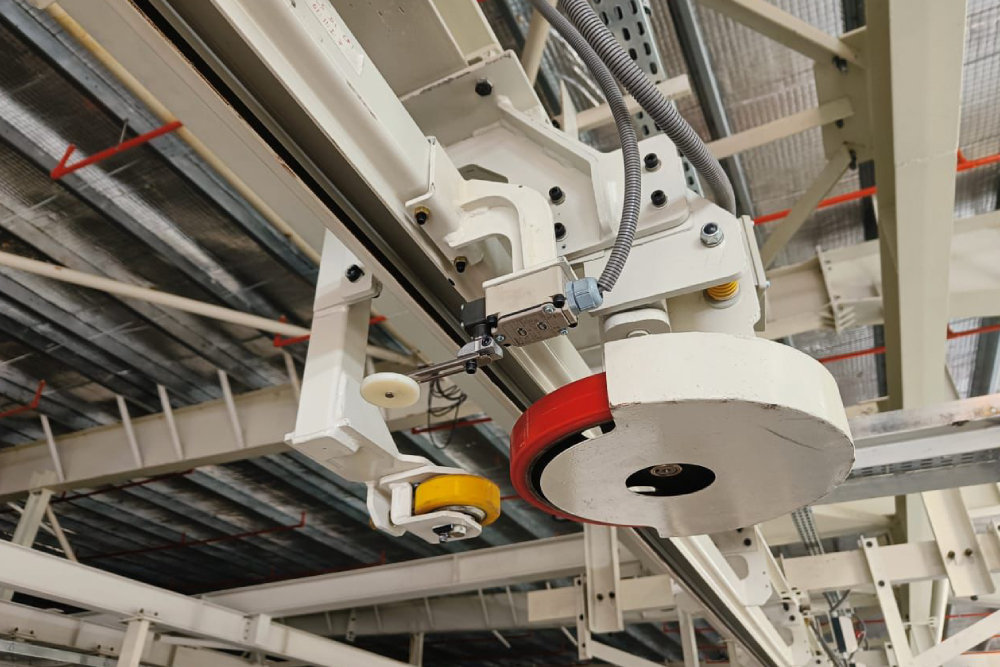

Which conveyor will help you get the job done — a friction conveyor or a roller conveyor? The answer lies in your unique requirements and industry, and you will only be able to decide which one to choose when you know the following:
- How do they work?
- What are the key differences between them?
- What are their specific applications?
This blog is your guide to learn everything you need to know about friction and roller conveyors. So, without further ado, let’s get into the details.
What Is A Friction Conveyor?
Friction conveyors use friction to manage the speed, stopping and direction of the carriers, either individually or as a group of them. They feature a spring-tensioned friction drive wheel and a fixed idler wheel, which is positioned on either side of the carrier’s load or the friction bar. As the load or the friction bar is drawn between the drive and idler wheel, the carrier moves forward.
How Does It Work?
Friction conveyors use a continuous moving track or a belt which is driven by motors. The key component of this conveyor system is the friction drive mechanism. It provides the necessary load for the load to move. Moreover, the conveyor applies controlled pressure to the load so that it moves with smooth and precise movements without sudden stops or jolts.
Some of the friction conveyor systems also have clamping mechanisms. Essentially, these clamping mechanisms help for controlled acceleration and acceleration for steady movements.
What Is A Roller Conveyor?
Roller conveyors feature evenly spaced cylindrical rollers across an open space or between two elevations. These rollers come in a variety of materials. For instance, plastic and rubber rollers increase friction, whereas steel and aluminium rollers have a smooth surface, which reduces friction.
One important thing to note here is that the load you want to transfer using a roller conveyor should be flat and rigid for smooth movement. Typically, you will find the following types of roller conveyors:
- Gravity roller conveyor
- Belt Driven Live Roller Conveyor (BDLR)
- Chain-driven roller conveyors
- Line shaft roller conveyors
- Zero-pressure roller conveyors
How Does It Work?
Each roller conveyor mentioned above works differently. For instance, gravity rollers rely on gravity. They have no motors. Similarly, a Belt Driven Live Roller Conveyor (BDLR) makes uses of motors to power each roller with the help of a motorized belt.
Furthermore, a chain-driven roller uses a chain. It has sprockets that are attached to each roller, which drives them individually. Finally, a line shaft roller uses a rotating shaft which features a spool and belts connected individually to each roller.
Key Differences Between Friction and Roller Conveyors
Now that you have a fair idea of friction and roller conveyors, the following are some of the key differences between them.
| Friction Conveyors | Roller Conveyors |
| Typically uses friction drive with a moving belt or track | Uses rotating rollers to transfer the load |
| Gives you precise control over speed and positioning | Less precise based on the exact kind of roller conveyor system. Relies on continuous movement. |
| Best for delicate, heavy or high-precision materials | Best for bulk goods or packaged items that need to move at constant speed |
| Can move products forward, backward, or stop at specific points | Items mostly move in a single direction. However, some types of roller conveyors allow for reverse movements. |
| The object experiences direct surface content with the friction belt or track. | Items rest comfortably on rollers with gaps in the middle. Thus reducing the wear and tear on objects. |
| Requires periodic maintenance for friction belts | Generally low maintenance but rollers may require occasional replacements |
| Usually quieter due to smoother movements | Can be noisier especially if you are moving heavy loads |
| Typically seen in automotive, electronics, and precision manufacturing industries | Generally seen in warehousing, logistics, packaging, and distribution centers |
Specific Application for Friction Conveyors
Some of the specific applications of friction conveyors are as follows:
- Automotive assembly lines for transporting parts through different stages of vehicle assembling
- Electronics manufacturing to ensure that static-sensitive products are not damaged during the process
- For sorting out parcels to efficiently handle a high volume of parcels
- Transfer packaged food through inspection, sealing, and boxing process.
- Transport drums and containers with chemicals and hazardous substances.
- At airports for loading areas and baggage counters
Specific Application for Roller Conveyors
The following are the specific applications of roller conveyors:
- As cost-effective alternatives to forklifts for product movement in supply chain and warehouse operations
- In metal working for sorting and identifying scrap materials.
- Handling heavy and bulk items in warehouses
- In assembly lines stopping goods temporarily to allow workers to complete the task before moving the products to the next station
Conclusion
Friction and roller conveyors are excellent at improving efficiency, reducing the processing time and increasing your productivity. We are a leading friction conveyor and roller conveyor manufacturer in India. With unmatched durability, swift implementation and end-to-end support, we offer tailor solutions to meet your operational needs. Get in touch with us to know more.
ALSO READ
Understanding the Functions of Roller Conveyors
How Roller Conveyors Drive the Automotive Industry
Chain vs Roller Conveyors: Choose the Best
The Benefits of Partnering with a Reliable Roller Conveyor Supplier


